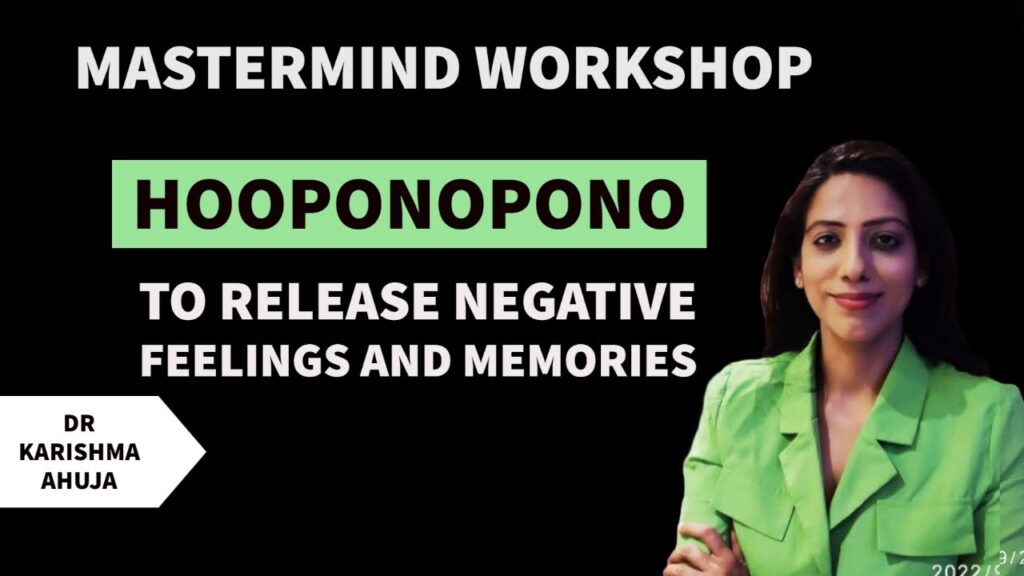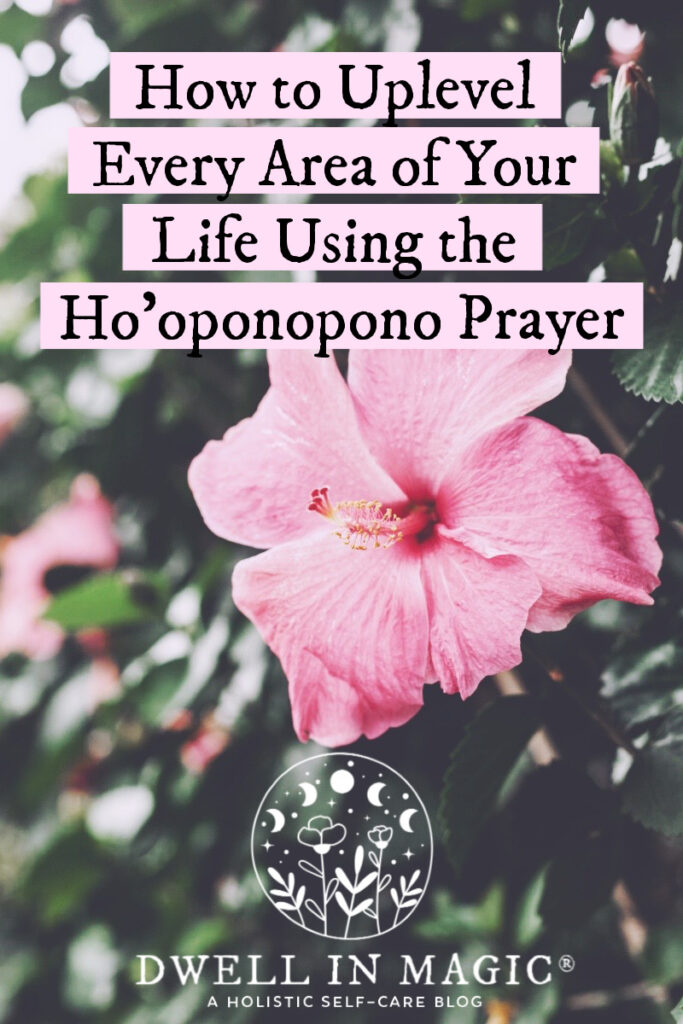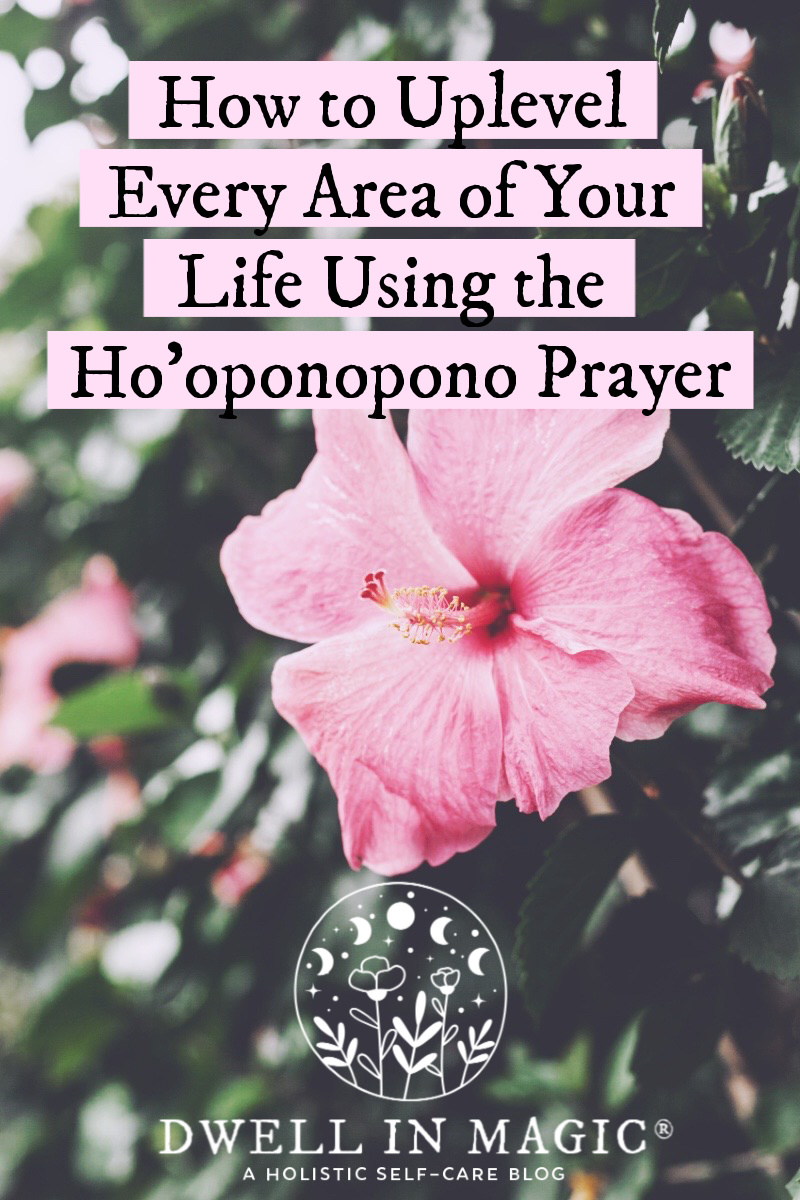In this article, you’ll learn how Ho’oponopono can help you deal with negative emotions. We’ll explore the principles and techniques of this ancient Hawaiian practice, and how it can be applied to your daily life. Whether you’re feeling angry, stressed, or sad, Ho’oponopono offers a powerful tool for healing and releasing these negative emotions. By understanding and practicing this spiritual technique, you can experience a greater sense of peace, happiness, and emotional well-being. Negative emotions can be overwhelming and detrimental to our mental well-being. It’s important to find effective strategies to deal with these emotions and promote healing and growth. One such approach is Ho’oponopono, a traditional Hawaiian practice that centers around forgiveness, gratitude, and self-reflection. In this article, we will explore what Ho’oponopono is, its origins, and how it can be used to address negative emotions. We will also delve into the process of practicing Ho’oponopono, its benefits, scientific studies on its effectiveness, personal experiences, and its integration into daily life. While there may be criticisms and limitations associated with Ho’oponopono, it is still worth exploring and experiencing for its potential positive impact on our emotional well-being.
What is Ho’oponopono?
Definition of Ho’oponopono
Ho’oponopono is a Hawaiian word that translates to “to make right” or “to rectify an error.” It is a traditional spiritual practice that aims to bring harmony, forgiveness, and resolution to conflicts within families or communities. This practice acknowledges that everyone is interconnected, and any disharmony or negative emotions experienced by one person can affect the collective well-being of the group.
Origins of Ho’oponopono
Ho’oponopono originated in ancient Hawaiian culture, where it was used as a tool for conflict resolution and healing. It was traditionally performed by a facilitator, often a family elder or kupuna, who would guide the process of communication and forgiveness among the participants. Over time, Ho’oponopono has evolved and adapted, finding its way into various contexts and cultural interpretations.
Understanding Negative Emotions
Explanation of negative emotions
Negative emotions are a natural part of being human. They can arise from various sources such as past traumas, stress, conflicts, or unmet expectations. Negative emotions encompass feelings like anger, sadness, fear, guilt, or shame. These emotions can be intense and may impact our mental well-being, relationships, and overall quality of life if left unaddressed.
Effects of negative emotions on mental well-being
Persistent negative emotions can have detrimental effects on our mental well-being. They can contribute to increased stress, anxiety, depression, and even physical health issues. Negative emotions can also impact our relationships, as they may lead to conflicts, resentment, and a breakdown in communication. It is crucial to address and manage negative emotions in order to maintain emotional balance and promote overall well-being.

Ho’oponopono’s Approach to Healing
Concept of forgiveness in Ho’oponopono
One of the central tenets of Ho’oponopono is forgiveness. In this practice, forgiveness is not just about absolving others of their wrongdoings but also about taking responsibility for our own thoughts, actions, and emotions. Ho’oponopono recognizes that holding onto grudges, anger, or resentment only perpetuates negativity and prevents healing. By forgiving ourselves and others, we can release negative emotions and create space for healing and growth.
The role of gratitude in Ho’oponopono
Gratitude is another important aspect of Ho’oponopono. Expressing gratitude allows us to shift our focus from what is wrong or lacking in our lives to what we appreciate and value. It cultivates a sense of positivity and abundance, helping us to reframe our perspective and find joy in the present moment. By practicing gratitude, we can counteract negative emotions and foster a more harmonious mindset.
Process of Practicing Ho’oponopono
Steps involved in Ho’oponopono
Practicing Ho’oponopono involves a structured process that promotes healing and the release of negative emotions. While there may be variations in the specific steps depending on the context, the core principles remain consistent. The typical steps involved in Ho’oponopono generally include:
-
Self-reflection: Taking the time to reflect on one’s thoughts, emotions, and actions, and acknowledging any negative patterns or beliefs that may contribute to the experience of negative emotions.
-
Seeking forgiveness: Apologizing and asking for forgiveness from oneself, others, and even a higher power or divine presence if one resonates with that belief system.
-
Expressing gratitude: Cultivating a sense of appreciation and expressing gratitude for the lessons learned, the opportunities for growth, and the support received from others and the universe.
-
Letting go: Surrendering the negative emotions and attachments to outcomes, releasing the need to control or hold onto negative experiences, and embracing a sense of peace and acceptance.
Tools and techniques used in Ho’oponopono
Ho’oponopono incorporates various tools and techniques to support the healing process. These may include prayers, mantras, visualizations, meditation, or writing letters of forgiveness. The specific tools used can vary depending on individual preferences and cultural context. The key is to find practices that resonate with you and support your journey of healing and emotional well-being.

Benefits of Ho’oponopono
Reduction of negative emotions
One of the primary benefits of Ho’oponopono is its ability to reduce negative emotions. By practicing forgiveness, gratitude, and self-reflection, individuals can release anger, resentment, guilt, and other detrimental emotions. This release allows for emotional healing and creates space for more positive and fulfilling experiences in life. Ho’oponopono enables individuals to let go of the past and embrace the present with a renewed sense of peace and clarity.
Improved mental and emotional well-being
As individuals engage in the practice of Ho’oponopono, they may experience improved mental and emotional well-being. The process of forgiveness and gratitude can lead to a reduction in stress, anxiety, and depressive symptoms. By addressing negative emotions and cultivating a more positive mindset, individuals may also see improvements in their relationships, communication skills, and overall quality of life. Ho’oponopono offers a pathway to inner peace and emotional resilience.
Scientific Studies on Ho’oponopono
Research findings on the effectiveness of Ho’oponopono
Although research on Ho’oponopono is limited, some studies have explored its potential benefits. A study published in the International Journal of Healing and Caring found that participants who practiced Ho’oponopono reported improvements in forgiveness, self-compassion, and overall psychological well-being. Another study published in The Journal of Alternative and Complementary Medicine showed that Ho’oponopono was associated with reduced anger and stress levels among participants. While more research is needed, these preliminary findings suggest the potential effectiveness of Ho’oponopono in addressing negative emotions.
Impact of Ho’oponopono on brain activity
Research has also shown the impact of Ho’oponopono on brain activity. Neuroimaging studies have found that practicing forgiveness, gratitude, and self-reflection, which are central to Ho’oponopono, can activate regions of the brain associated with positive emotions and overall well-being. These findings further support the potential neurological benefits of Ho’oponopono in promoting emotional healing.

Personal Experiences with Ho’oponopono
Testimonials of individuals practicing Ho’oponopono
Many individuals who practice Ho’oponopono have shared their personal experiences and testimonials. They have reported transformative effects on their emotional well-being, relationships, and overall sense of happiness. Some individuals have found relief from long-standing grudges and healed broken relationships through the practice of forgiveness. Others have experienced a deep sense of peace, self-acceptance, and gratitude.
Success stories of overcoming negative emotions
Numerous success stories illustrate how Ho’oponopono has helped individuals overcome negative emotions. People have reported releasing anger, resentment, and unforgiveness that have plagued them for years, leading to a newfound sense of freedom and emotional liberation. By actively engaging with the process of Ho’oponopono, individuals have been able to transform their lives and navigate challenges with greater resilience and positivity.
Integrating Ho’oponopono into Daily Life
Incorporating Ho’oponopono into daily routines
Ho’oponopono can be integrated into daily routines to support emotional well-being. Some simple ways to incorporate Ho’oponopono into your daily life include:
- Morning gratitude practice: Start each day by expressing gratitude for three things you appreciate in your life.
- Forgiveness mantra: Repeat a forgiveness mantra or affirmation throughout the day, such as “I forgive myself and others. I release resentment and embrace peace.”
- Reflective journaling: Take a few minutes each evening to reflect on your emotions, experiences, and any forgiveness or gratitude practices you engaged in throughout the day.
- Bedtime forgiveness prayer: Before going to bed, say a prayer or affirmation asking for forgiveness and releasing negative emotions.
By incorporating Ho’oponopono practices into your daily life, you can cultivate a mindset of forgiveness, gratitude, and self-reflection, leading to a more positive and emotionally balanced state.
Using Ho’oponopono for conflict resolution
Ho’oponopono can also be utilized as a tool for conflict resolution in relationships. By engaging in open and honest communication, expressing forgiveness, and practicing gratitude, individuals can work towards resolving conflicts and healing fractured relationships. Ho’oponopono encourages individuals to take responsibility for their emotions and actions, creating an environment of understanding, empathy, and mutual respect. This approach fosters healing and paves the way for healthier and more harmonious connections.

Criticisms and Limitations of Ho’oponopono
Critiques of cultural appropriation
Ho’oponopono has faced criticism regarding cultural appropriation. Some argue that the practice has been commercialized and diluted in its adaptation to Western contexts, losing the cultural and spiritual nuances of its original form. It is important to approach Ho’oponopono with cultural sensitivity and respect, appreciating its rich Hawaiian heritage and honoring its origins.
Potential drawbacks and challenges of practicing Ho’oponopono
Like any practice, Ho’oponopono has its limitations and potential challenges. It requires commitment, patience, and self-reflection. It may also be challenging for individuals who struggle with forgiveness or who have experienced deep traumas. It is important to approach Ho’oponopono with self-compassion and seek support from trained professionals, therapists, or counselors if necessary.
Conclusion
Ho’oponopono offers a unique and holistic approach to addressing negative emotions and promoting emotional healing. Through forgiveness, gratitude, and self-reflection, individuals can release anger, resentment, and guilt, making way for peace, resilience, and overall well-being. While criticisms and limitations exist, approaching Ho’oponopono with cultural sensitivity and integrating its practices into daily life can lead to transformative experiences. So why not explore Ho’oponopono and see how it can help you navigate the complexities of negative emotions and foster emotional well-being? Embrace forgiveness, cultivate gratitude, and embark on a journey of healing and growth with Ho’oponopono.

